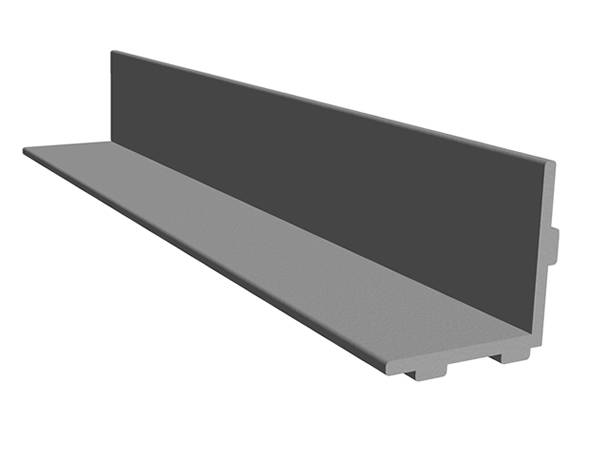Introduction
Fiber-reinforced polymers (FRPs) have become a go-to material for modern construction projects, offering significant benefits in terms of durability, weight reduction, and corrosion resistance. However, one critical factor that can make or break the integrity of FRP-reinforced structures is the FRP embedment angle. By choosing and applying the right embedment angle, you can enhance the load-bearing capacity of beams, columns, and other structural elements. This article provides expert tips for selecting the ideal FRP embedment angle to ensure the long-term performance and safety of your construction projects.

frp embedment angle
Understanding FRP Embedment Angles
What Is FRP?
Fiber-reinforced polymer (FRP) is a composite material composed of a polymer matrix (commonly epoxy, polyester, or vinyl ester) that is reinforced with fibers (such as glass, carbon, or aramid). The combination of these elements creates a lightweight yet robust material that can withstand a variety of stresses. Over the years, FRPs have been widely adopted in aerospace, marine, and civil engineering due to their high strength-to-weight ratio and resistance to corrosion.
The Role of Embedment Angles
When FRP materials are used as reinforcement, engineers often insert or bond them at specific angles to optimize load transfer. The term “FRP embedment angle” refers to the orientation at which these fibers or composite sheets are placed relative to the structural component. For example, if the primary stress on a beam is along its longitudinal axis, FRP may be placed at an angle that maximizes tension resistance in that direction.
- Load Distribution: Embedding FRP at the correct angle helps distribute loads more evenly, reducing stress concentrations.
- Improved Bonding: Proper angles ensure better adhesion between FRP layers and the underlying concrete or steel components.
- Enhanced Ductility: Adjusting the FRP embedment angle can improve the ductility of the structure, allowing it to withstand dynamic or cyclical loads more effectively.
Factors Influencing FRP Embedment Angle
Material Properties
Different FRP composites have distinct mechanical and chemical properties that affect how they behave when embedded at various angles. For instance, carbon fiber has a higher tensile strength compared to glass fiber but is also more rigid. This rigidity means the embedment angle must be carefully calculated to avoid creating stress points that could lead to microcracking.
- Fiber Type: Carbon, glass, and aramid fibers each have unique tensile strengths and stiffness.
- Resin Matrix: The choice of epoxy, polyester, or vinyl ester impacts the bonding capability and flexibility of the FRP.
- Compatibility with Base Material: Always ensure that the FRP’s thermal expansion coefficient aligns with that of the base material—mismatched rates can lead to premature failure.
Environmental Conditions
Environmental factors play a significant role in determining the ideal FRP embedment angle. For example, a bridge deck in a coastal region experiences salt-laden air, intense sunlight, and heavy rain. Such exposure can deteriorate materials over time if the embedment angle is not chosen to accommodate potential corrosion or UV degradation.
- Temperature Fluctuations: Repeated expansion and contraction cycles can stress improperly angled FRP.
- Moisture and Humidity: High moisture levels can weaken the bond between FRP and the substrate if not accounted for in the design.
- Chemical Exposure: Structures near industrial areas may face corrosive chemicals, requiring careful FRP orientation to resist damage.
Expert Tips for Enhanced Structural Performance
Proper Design Analysis
Before finalizing your FRP embedment angle, conduct a thorough structural analysis that considers:
- Load Directions: Identify the principal stresses and orient the FRP to counteract those forces.
- Finite Element Modeling (FEM): Use computational tools to simulate how different angles affect stress distribution and deformation.
- Safety Factors: Always include a margin of safety in your calculations, especially in high-risk applications like bridges or high-rise buildings.
A 2021 study published in the Journal of Composites for Construction found that structures with optimally designed FRP angles experienced up to 25% higher load-bearing capacity than those reinforced at suboptimal angles.
Quality Installation and Inspection
Even the best-engineered design will underperform if the FRP installation and inspection processes are not carried out correctly.
- Surface Preparation: Ensure the substrate is free from dust, debris, and moisture before FRP application.
- Adhesive Application: Uniformly apply the resin or adhesive to maintain a consistent bond across all embedded sections.
- Curing Conditions: Follow the recommended curing time and temperature specified by the FRP manufacturer to maximize bond strength.
- Regular Inspection: Use techniques like ultrasonic testing or thermographic imaging to detect any internal defects, such as voids or delamination.
Maintenance and Long-Term Monitoring
Once the FRP is installed at the correct angle, maintain a regular inspection schedule to check for any signs of wear or damage.
- Visual Checks: Look for discoloration, cracks, or exposed fibers that might indicate environmental or mechanical damage.
- Load Testing: Periodically perform load tests to ensure that the FRP-reinforced element meets original design expectations.
- Documentation and Records: Maintain detailed records of all inspections and repairs to track the long-term performance and make data-driven decisions on reinforcements or replacements.
Effective long-term monitoring not only extends the lifespan of the FRP-reinforced component but also provides valuable data for future projects, guiding best practices for choosing the ideal FRP embedment angle.
Conclusion
Selecting the right FRP embedment angle is vital for achieving enhanced structural performance and longevity. By understanding the properties of different FRP materials, analyzing environmental conditions, and diligently following quality control measures, engineers and contractors can significantly improve the resilience of their projects. Whether you’re reinforcing a building beam or a highway overpass, investing the time and effort to optimize your FRP embedment angle will pay off in safety, durability, and cost-effectiveness.
Call to Action: If you found these insights helpful, please share your thoughts in the comments below. Don’t forget to subscribe to our newsletter for more expert guidance on FRP systems and other cutting-edge construction solutions.




























